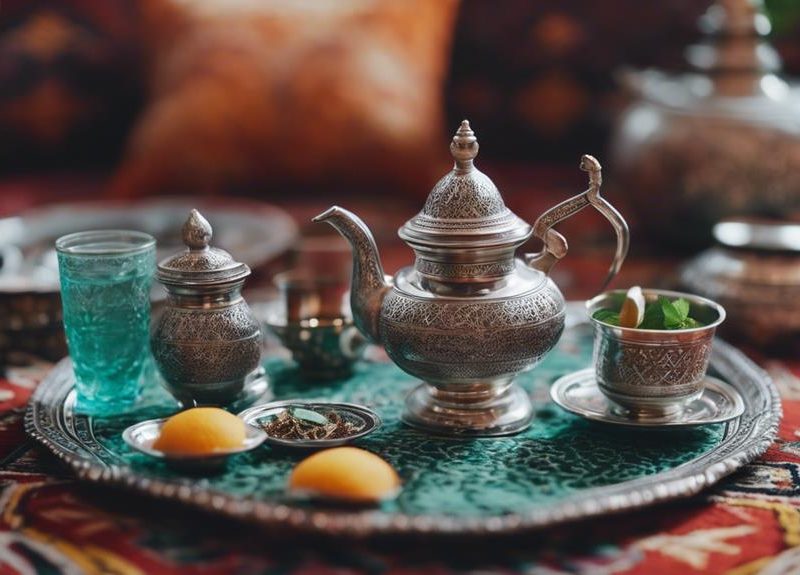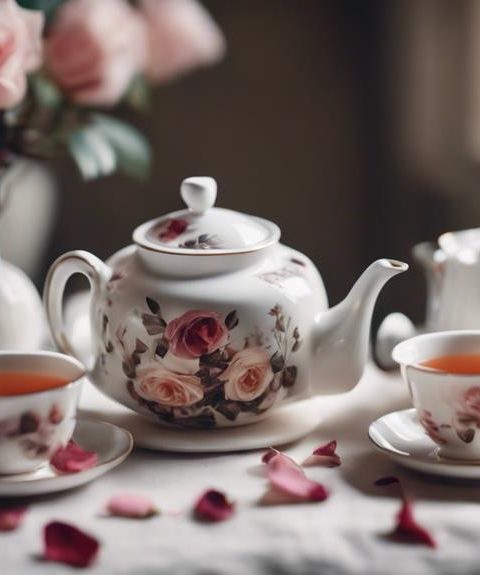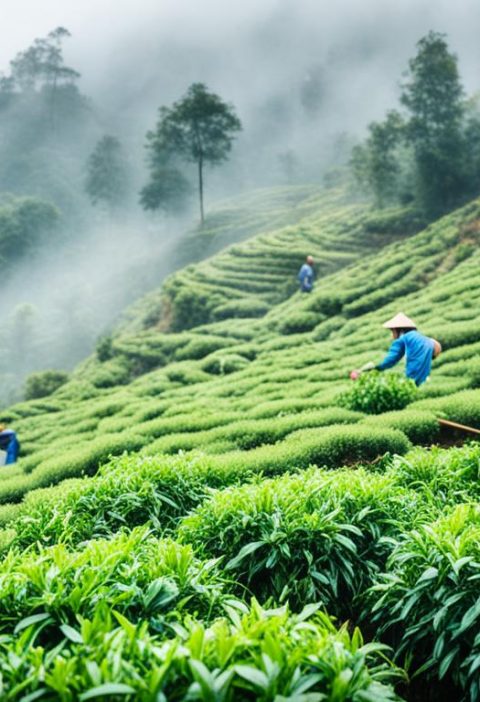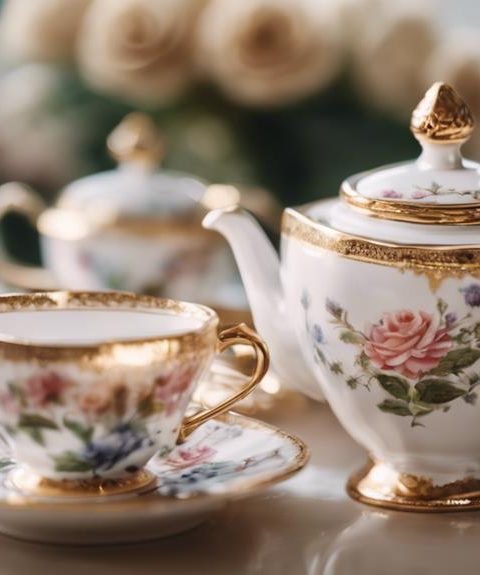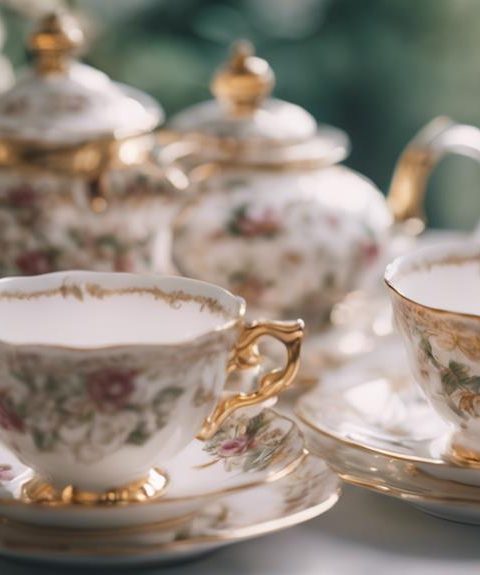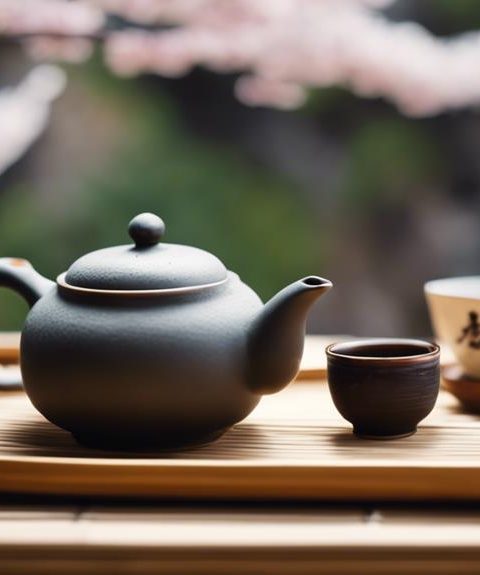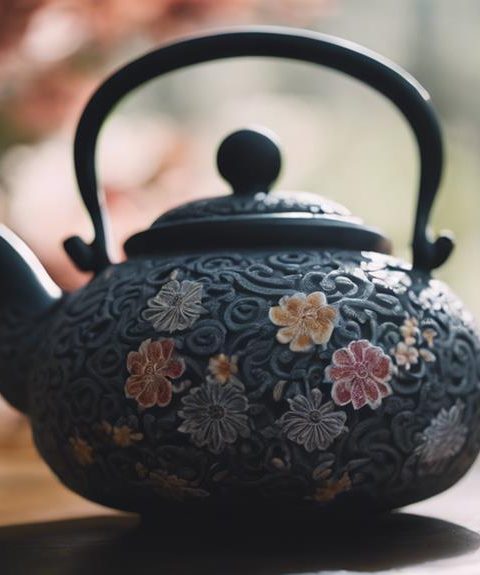Immerse yourself in the enchanting world of Moroccan tea ceremony sets, where tradition meets elegance. Experience the beauty and grace of the traditional mint tea service, a symbol of hospitality and friendship. Discover the intricate customs and cultural heritage woven into every cup of Moroccan mint tea.
Explore the historical significance and symbolism behind each pour, as you sip on the refreshing blend of gunpowder green tea, fresh spearmint leaves, and a hint of sugar. Enhance your tea experience with exquisite silver or brass teapots that embody the values of generosity and warmth.
Elevate your gatherings with elegant tea glasses adorned with intricate designs, adding a touch of sophistication to your table setting. Uncover the secrets of the tea pouring ritual, a symbol of welcome and hospitality in Moroccan culture.
Delight in the art of tea preparation and presentation, and immerse yourself in the rich tapestry of Moroccan tea culture. Discover more about the rituals and hosting tips that make Moroccan tea ceremonies truly special.
Key Takeaways
For an authentic tea ceremony experience, consider using traditional tea sets such as silver or brass teapots. Enhance the elegance of the ceremony with tea glasses featuring intricate designs. Elevate the aromatic and flavorful tea experience by adding fresh mint leaves. For modern warmth retention, explore innovations like double-walled glass teapots. Create a welcoming atmosphere by offering comfortable seating and engaging guests in the tea-making process.
History of Moroccan Tea Ceremony
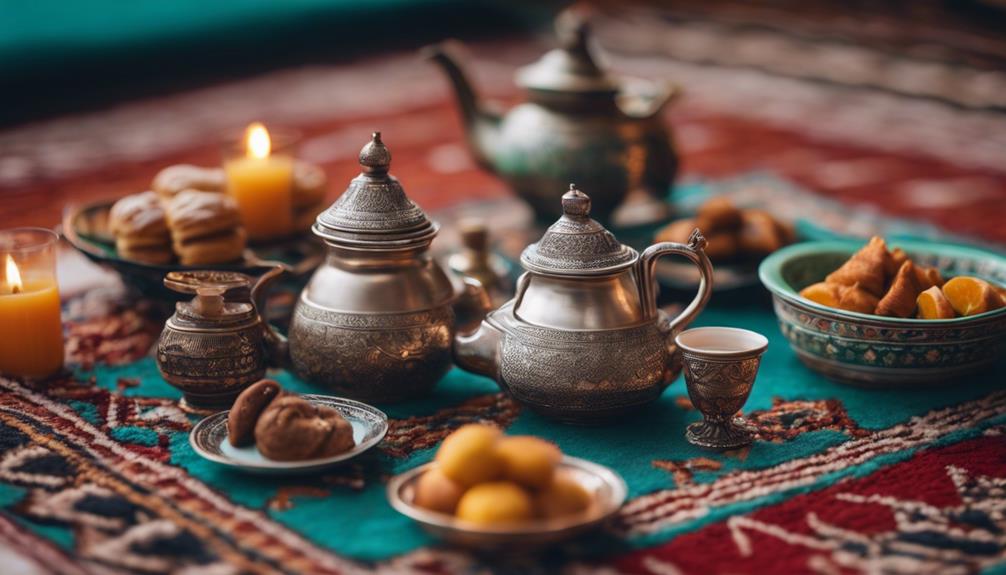
The Moroccan Tea Ceremony, deeply rooted in the cultural fabric of the Maghreb region, has been celebrated for centuries as a symbol of warmth, camaraderie, and tradition in Moroccan society. Originating in the 18th century, this ritualistic tea preparation and serving practice was introduced to Morocco from China, traversing ancient trade routes. As time went on, the art of tea-making evolved into the intricate and elegant ceremony it's known as today.
Tea holds a pivotal role in Moroccan social customs, where the tea ceremony stands as a cornerstone of communal gatherings, festivities, and everyday social exchanges. This ceremonial process entails a meticulous sequence of steps and adherence to specific etiquettes. It transcends the mere act of tea consumption, emphasizing the shared experience and connection it nurtures among individuals.
Through the centuries, the Moroccan Tea Ceremony has come to embody the essence of Moroccan heritage, reflecting the nation's vibrant past and cultural legacy. Passed down through generations, each family imparts its unique flair to this cherished tradition, adding layers of personal touch to an age-old ritual.
Significance of Mint Tea
Mint tea is deeply intertwined with Moroccan culture, not only for its delightful flavor but also for its array of health benefits. This traditional beverage plays a significant role in Moroccan hospitality and social gatherings, symbolizing warmth and hospitality.
The act of serving mint tea embodies core values such as friendship, generosity, and tradition that are fundamental to Moroccan society. This cultural practice reflects the importance of connection and community in Moroccan daily life.
Mint Tea Benefits
Adding mint to tea can be incredibly refreshing due to its numerous benefits. Mint tea aids digestion by relaxing the muscles in the digestive tract, reducing bloating, and alleviating indigestion. The natural menthol in mint can also help relieve nausea and headaches.
Furthermore, the antioxidants in mint tea boost the immune system, helping to prevent illnesses. Mint tea is well-known for its calming properties, making it a great choice for reducing stress and promoting relaxation. Additionally, this herbal tea freshens breath, clears sinuses, and provides a rejuvenating experience with every sip.
Incorporating mint tea into your routine can offer a wide range of health advantages.
Mint Tea Culture
Mint tea in Moroccan culture represents more than just a beverage; it embodies hospitality, friendship, and tradition. This aromatic tea plays a significant role in social gatherings and daily life, symbolizing warmth and welcome.
In Moroccan households, the act of serving mint tea is a gesture of respect and hospitality towards guests, highlighting the importance of communal values. The combination of refreshing mint and soothing tea creates a sensory experience deeply rooted in Moroccan customs, fostering connections and strengthening relationships.
Whether shared during casual conversations or formal events, mint tea serves as a symbol of unity and togetherness within the community.
Traditional Tea Ingredients
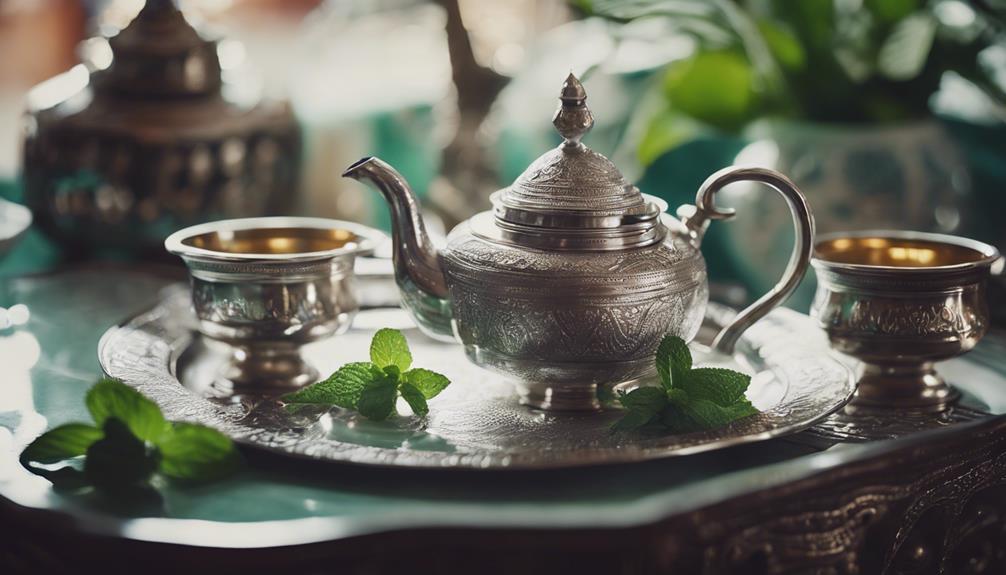
Experience the sensory delight of the traditional Moroccan mint tea, a blend of spices used in Moroccan tea ceremonies. This tea features gunpowder green tea, fresh spearmint leaves, and sugar. Gunpowder green tea, known for its tightly rolled leaves, forms the robust base of the tea. Fresh spearmint leaves add a refreshing aroma and flavor to the brew, enhancing its taste profile. The addition of sugar balances the bitterness of the tea and mint, creating a harmonious sweetness.
To enrich the experience, variations of Moroccan mint tea may include orange blossom water or pine nuts. Orange blossom water lends a subtle floral note, while pine nuts offer a nutty richness that complements the overall flavor. These ingredients blend harmoniously to create a delightful and invigorating beverage cherished in Moroccan hospitality and culture.
Types of Moroccan Teapots
Moroccan teapots, with their diverse shapes and sizes, offer a blend of charm and practicality that enhances the traditional mint tea experience. Here are some types of Moroccan teapots to explore:
- Classic Teapot: This teapot, with its round shape and long curved spout, ensures easy pouring without any spills.
- Decorative Teapot: Adorned with intricate designs and vibrant colors, these teapots serve as stunning centerpieces on the table.
- Metal Teapot: Crafted from durable metals like brass or silver, these teapots excel at retaining heat for extended periods.
- Modern Teapot: Embracing a sleek and minimalist design, these teapots offer a contemporary twist to the Moroccan tea ritual.
- Glass Teapot: Transparent and captivating, these teapots allow you to witness the tea steeping process, adding a visual delight to the ceremony.
Choosing the perfect Moroccan teapot can elevate your tea service, bringing an authentic touch to your mint tea ritual.
Designs of Tea Glasses
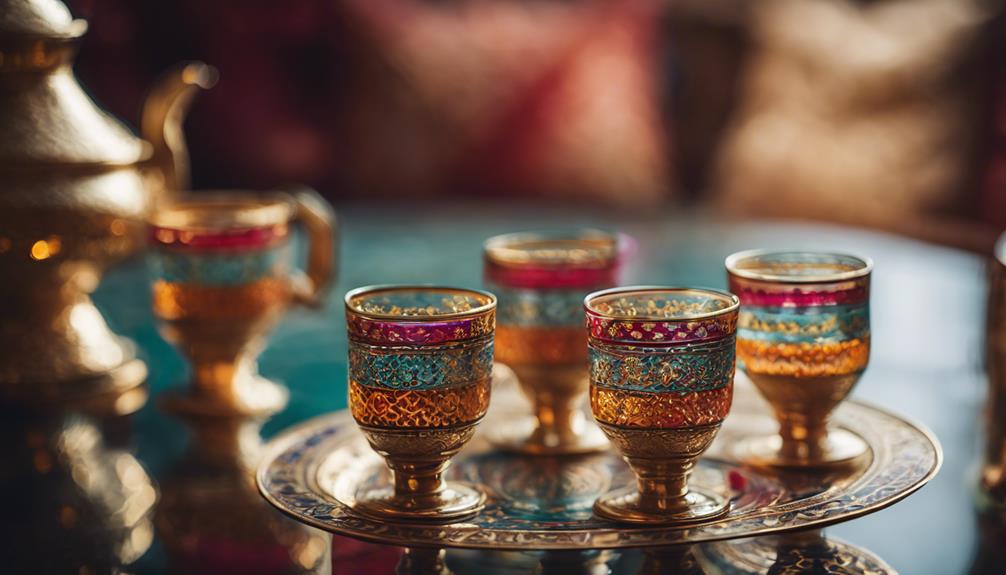
When choosing tea glasses for your Moroccan tea ceremony, explore the wide range of intricate designs that can enhance your tea-drinking experience. Moroccan tea glasses are crafted in various shapes and sizes, each exuding its own unique allure. Traditional Moroccan tea glasses are often embellished with vibrant patterns, intricate metalwork, and sometimes even jewels, adding a touch of sophistication to your tea ritual. These glasses are usually see-through, allowing you to admire the rich hues of the mint tea as you pour it in.
For a luxurious presentation during your tea ceremony, you might opt for Moroccan tea glasses with a silver or gold rim. This design imparts a lavish feel to your tea service and creates a striking display when entertaining guests. Some glasses showcase a delicate filigree pattern that catches and reflects light beautifully, casting a captivating spell as you savor your tea. Whichever design captures your fancy, Moroccan tea glasses are certain to elevate your tea-drinking experience to a realm of refinement and elegance.
Serving Tray Varieties
Serving trays for Moroccan tea ceremonies offer a range of unique features that elevate the experience and showcase the artistry of Moroccan craftsmanship. These trays, often crafted from metal like brass or silver, boast intricate engravings and patterns that highlight the beauty of Moroccan design. Some trays are embellished with colorful gemstones or enamel work, adding a vibrant touch to the presentation.
In addition to their aesthetic appeal, these serving trays are designed with practicality in mind. They come in various sizes to hold the tea pot, glasses, sugar bowl, and snacks like dates or nuts. Convenient handles on the sides make it easy to carry and serve tea to guests, ensuring a smooth and elegant pouring process.
Whether you prefer a traditional, ornate design or a more modern, minimalist style, there's a serving tray to suit every preference. These trays aren't only a decorative element but also a functional necessity for the Moroccan tea ceremony, enhancing both the visual presentation and the practical aspects of serving tea to guests.
Ritual of Pouring Tea
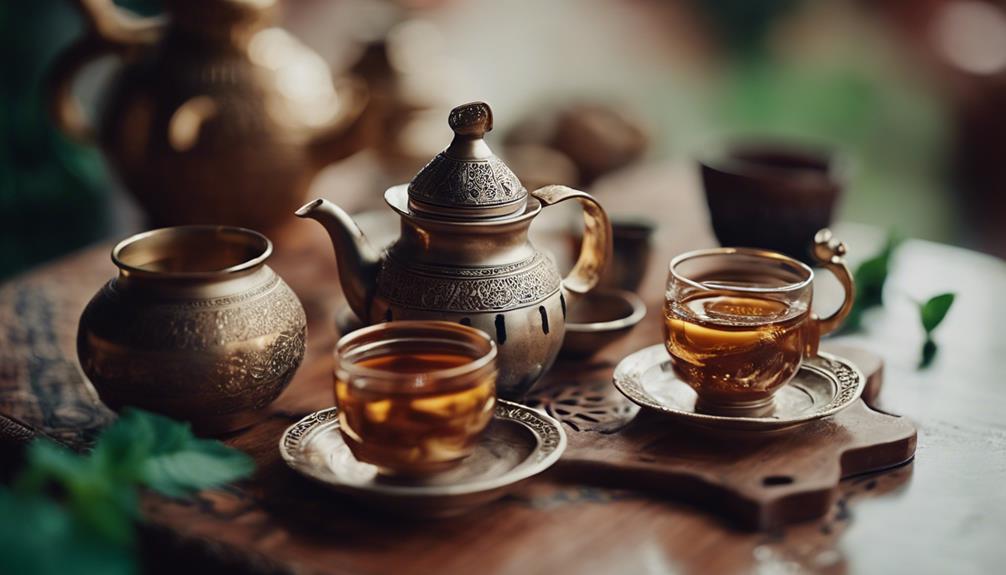
Embark on a journey through the art of pouring tea in a Moroccan tea ceremony, where tradition and elegance intertwine.
Discover the intricate technique of pouring tea, the cultural significance of traditional tea vessels, and the essential etiquettes that shape this ceremony.
Experience the harmony and authenticity of a Moroccan tea ritual as these elements converge in a seamless blend of flavors and customs.
Tea Pouring Technique
Pouring tea in the Moroccan tea ceremony embodies grace and tradition, enriching the experience with elegance. Elevating the teapot high above the cup is a key element of this ritual. This action creates a mesmerizing flow of tea that not only oxygenates the beverage but also intensifies its flavor.
The fluid motion of the tea cascading from the spout symbolizes reverence towards the guests and reflects the host's warm hospitality. As you pour, focus on maintaining a steady hand to ensure a seamless and uninterrupted stream of tea into the cups. Mastering this pouring technique elevates not just the taste of the tea but also infuses the Moroccan tea ceremony with a sense of ceremonial significance and cultural heritage.
Traditional Tea Vessels
In the Moroccan tea ceremony, traditional tea vessels hold significant cultural symbolism and aesthetic charm, enriching the ritual of pouring tea. The teapot, typically crafted from silver or brass, embodies the values of hospitality and warmth deeply rooted in Moroccan culture.
During the pouring process, the host elevates the teapot above the tea glasses, creating a frothy layer that signifies a well-prepared tea. Adorned with intricate designs, the tea glasses contribute elegance to the ceremony.
Pouring tea from a height serves a practical purpose beyond display; it aerates the tea, cools it down, and intensifies the flavors, enhancing the overall experience. These cherished vessels, passed down through generations, encapsulate the essence of Moroccan hospitality and tradition.
Tea Ceremony Etiquette
Pouring tea in the Moroccan tea ceremony is a sophisticated art that enhances the experience for both the host and guests. Elevate the flavor and aroma by holding the teapot high above the glass, creating a frothy layer.
Start by pouring a small amount into the first glass, then return any excess to the teapot for consistent strength in each serving. Show respect by serving the tea with your right hand and always pour for guests before yourself.
Remember to pour slowly and gracefully, ensuring a smooth flow without spills. Following these customs adds elegance and refinement to the Moroccan tea ceremony.
Sweetening With Sugar
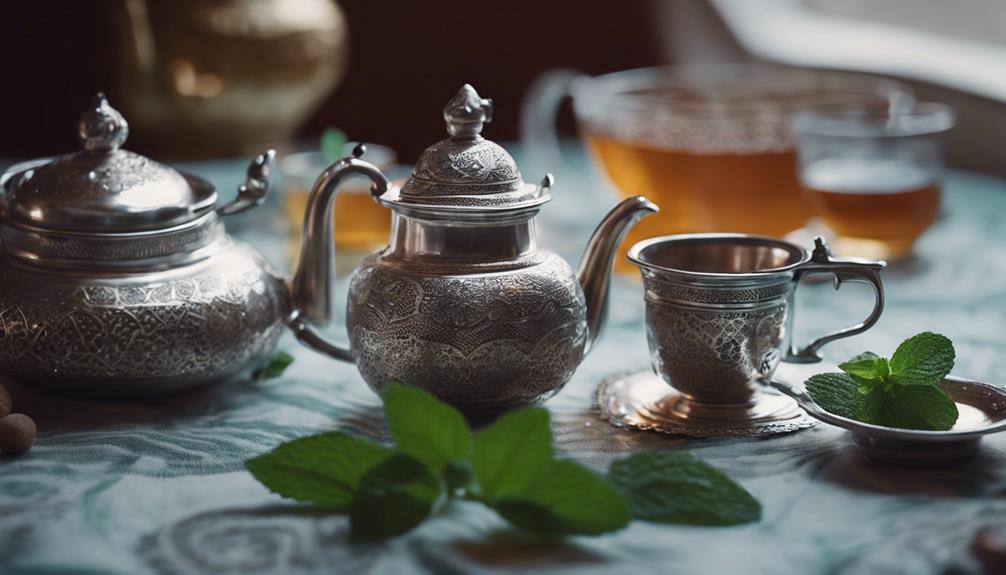
Moroccan tea, a renowned beverage for its sweet taste, relies on sugar to enhance its flavor profile. In the traditional Moroccan tea ceremony, sugar plays a vital role in harmonizing the bitterness of green tea leaves with the freshness of mint. When preparing Moroccan mint tea, a customary practice involves adding sugar to the teapot alongside tea and mint leaves before steeping them in hot water. The amount of sugar used varies based on personal preference, often leaning towards a generous quantity to achieve a sweet and revitalizing taste.
The presence of sugar in Moroccan tea contributes significantly to its overall appeal, enriching the experience of savoring a steaming cup of mint tea. During tea service, it's customary to pour the tea from a height to create a frothy layer, heightening the sensory pleasure of the tea-drinking ritual.
Role of Mint Leaves
In the art of preparing Moroccan mint tea, the presence of mint leaves is essential for enriching the aromatic and flavorful experience. These fresh mint leaves are a vital component that imparts a zesty and revitalizing essence to the traditional tea. Their infusion adds a refreshing coolness and a subtle sweetness that harmonizes perfectly with the intense notes of the tea.
For a delightful Moroccan mint tea, infuse a generous handful of fresh mint leaves into the boiling water alongside the tea leaves. Let them steep together for a few minutes to extract their vibrant flavors completely. The outcome is a harmonious blend of minty freshness that's both calming and invigorating.
Selecting top-quality mint leaves is crucial for capturing the authentic taste of Moroccan mint tea. Opt for aromatic leaves that are flawless to ensure the best results. By choosing carefully, you can enhance your tea experience and relish the true essence of this cherished Moroccan tradition.
Tea Ceremony Etiquette
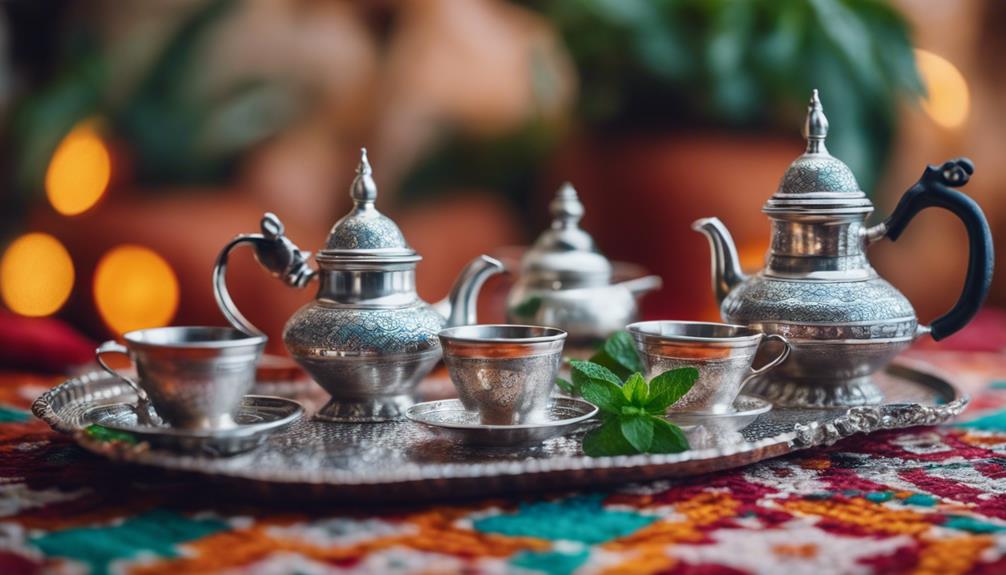
When engaging in a Moroccan tea ceremony, it's important to respect the time-honored customs and etiquette to fully immerse yourself in the cultural experience. Here are some key etiquette tips to keep in mind:
- Dress modestly: Choose attire that's modest to show respect for the occasion and the host, reflecting seriousness and respect.
- Accept tea with your right hand: Always accept or offer items, such as tea glasses, with your right hand as a gesture of goodwill and respect.
- Sip with your pinky down: When sipping tea, keep your pinky down to convey humility and politeness, avoiding the appearance of pretentiousness.
- Refill others' cups first: It's customary to refill the cups of others before refilling your own, showcasing generosity and hospitality.
- Use polite language: Address your host and fellow guests with traditional greetings and expressions of gratitude to foster a warm and welcoming atmosphere.
Cultural Symbolism in Tea Service
In Moroccan culture, tea symbolizes hospitality and warmth, embodying a tradition of respect and attentiveness towards guests.
The act of pouring tea continuously signifies a gesture of hospitality and care.
Moreover, the inclusion of fresh mint in Moroccan tea represents purity and goodwill, enhancing the shared experience of tea drinking as a symbol of positive intentions and sincerity.
Tea as Hospitality Symbol
In Moroccan culture, the tradition of serving tea holds significant importance, representing a gesture of warmth, hospitality, and friendship towards guests. This custom symbolizes a sense of welcome and appreciation for those being served.
The meticulous preparation and presentation of tea reflect a deep-rooted value of respect and care for visitors, fostering a feeling of connection and belonging within the community. Through the act of sharing tea, individuals engage in meaningful conversations and establish bonds, creating a space for relaxation and enjoyment in each other's company.
The Moroccan mint tea ceremony transcends beyond a simple beverage; it embodies the host's sincere intention to ensure guests feel at ease and embraced, cultivating a hospitable and inviting environment.
Ritual of Pouring
The Moroccan tea ceremony unveils a rich tapestry of cultural symbolism intertwined with the art of pouring tea.
In Moroccan tradition, the act of pouring tea transcends mere functionality, embodying values of hospitality, respect, and connection.
Pouring the tea from a height into small glasses not only aerates the brew, intensifying its flavors, but also ensures a thorough mixing of sugar for a harmonious taste.
This graceful pouring gesture symbolizes generosity, warmth, and reverence towards guests, underscoring the host's commitment to nurturing relationships.
Through this time-honored ritual, Moroccan culture highlights the significance of thoughtful gestures in fostering meaningful connections in social gatherings.
Meaning of Mint
Mint in the Moroccan tea ceremony represents more than just a flavor enhancer; it embodies cultural values and traditions, enriching the sensory experience for participants.
Mint's significance extends to hospitality, friendship, and heritage in the following ways:
- Hospitality: Mint in the tea symbolizes the gracious welcome and generosity Moroccan culture extends to guests.
- Friendship: Serving mint tea conveys a message of camaraderie and goodwill towards others, fostering meaningful connections.
- Tradition: Incorporating mint into the tea ritual showcases the enduring customs and rituals deeply rooted in Moroccan society, preserving heritage for generations to come.
Modern Tea Set Innovations
In the realm of tea set innovation, a harmonious blend of traditional artisanship and contemporary design has captivated the interest of modern tea connoisseurs. These cutting-edge tea sets seamlessly merge the time-honored grace of classical Moroccan tea ceremony ensembles with inventive elements tailored to meet the demands of today's tea aficionados.
An intriguing advancement lies in the advent of double-walled glass teapots and cups. This not only infuses a modern flair into the tea set but also serves a practical function by maintaining the tea's warmth sans the necessity of a tea cozy. Moreover, some modern tea sets showcase minimalist aesthetics characterized by sleek lines and geometric patterns, catering to individuals inclined towards a refined and modernistic style.
Furthermore, breakthroughs in materials have paved the way for the crafting of tea sets using robust and heat-enduring substances like borosilicate glass and stainless steel. These elements not only bolster the tea set's durability but also exude a contemporary charm that harmonizes with contemporary kitchen settings. As the landscape of tea customs continues its evolution, these innovative modern tea sets offer a novel interpretation of traditional tea rituals, attracting tea enthusiasts seeking to elevate their tea-drinking experiences.
Tips for Hosting Tea Gatherings
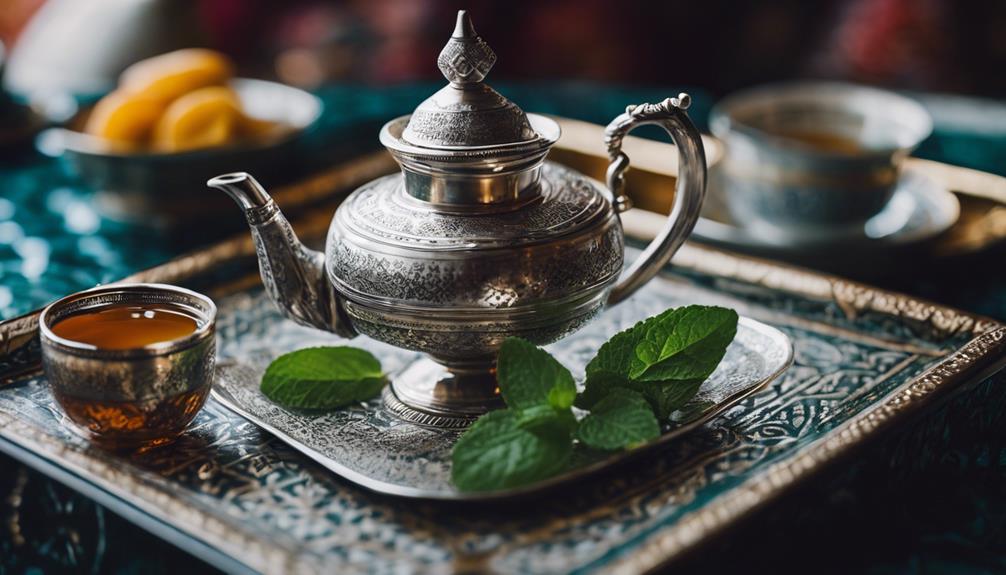
To ensure your tea gatherings are truly delightful and memorable for all your guests, here are some essential tips to consider:
- Creating an Inviting Atmosphere: Set up a designated tea space with comfortable seating arrangements and ambient music to enhance the mood and welcome your guests warmly.
- Attention to Detail with Quality Ingredients: Use premium tea leaves, fresh mint, and ensure you have the right tea accessories, such as Moroccan tea glasses and a traditional tea pot, to elevate the tea-drinking experience.
- Engage Guests in the Tea-Making Process: Invite your guests to participate in pouring the tea or serving the mint leaves, fostering a sense of community and shared enjoyment in the art of tea preparation.
Frequently Asked Questions
How Can I Properly Store and Care for My Moroccan Tea Set?
To maintain your Moroccan tea set in optimal condition, store it in a cool, dry area away from direct sunlight. Clean the set regularly using a gentle cloth and mild soap to preserve its intricate details. Refrain from using harsh chemicals that may harm the delicate craftsmanship.
Are There Specific Hand Gestures or Phrases Used During the Tea Ceremony?
In the Moroccan tea ceremony, participants show respect by raising their cups with their right hand. They use common phrases like 'b'saha' for cheers and 'shukran' to thank the host, enriching the cultural experience.
What Is the Significance of the Color or Design of the Tea Glasses?
The tea glasses used in Moroccan tea ceremonies are not just containers; they embody a rich cultural significance that encompasses themes of hospitality, tradition, and aesthetic appreciation. These glasses serve as symbols of Moroccan identity and heritage, reflecting a blend of artistic expression and functional use. The diverse color palettes and intricate designs of the glasses often carry deeper meanings that connect to regional influences, personal tastes, and historical narratives. Through their visual language, these glasses contribute to the sensory experience and storytelling woven into the fabric of Moroccan tea culture.
Can I Use Alternative Sweeteners Instead of Sugar in Moroccan Mint Tea?
You have the flexibility to use alternative sweeteners such as honey or stevia in Moroccan mint tea. Feel free to adjust the sweetness to suit your preference. While traditional recipes typically call for sugar, you can personalize the tea to your liking by exploring different sweetening options.
Are There Any Traditional Songs or Music Played During the Tea Ceremony?
In a Moroccan tea ceremony, the enchanting sounds of traditional music often accompany the experience, creating a delightful ambiance that elevates the magic of the mint tea service. This cultural practice incorporates melodies that soothe and captivate, enriching the ritual with a beautiful touch that resonates with the soul.
Conclusion
Discover the essence of the traditional Moroccan tea ceremony through its elaborate sets and the art of serving mint tea.
Delve into the rich history and cultural significance of mint tea, explore the diverse types of teapots and tea glasses utilized, and immerse yourself in the intricate etiquette of hosting a tea gathering.
By infusing modern innovations into this ancient ritual, you can craft an unforgettable and authentic Moroccan tea service for your guests to savor.
Here's to a flawless tea ceremony experience!
